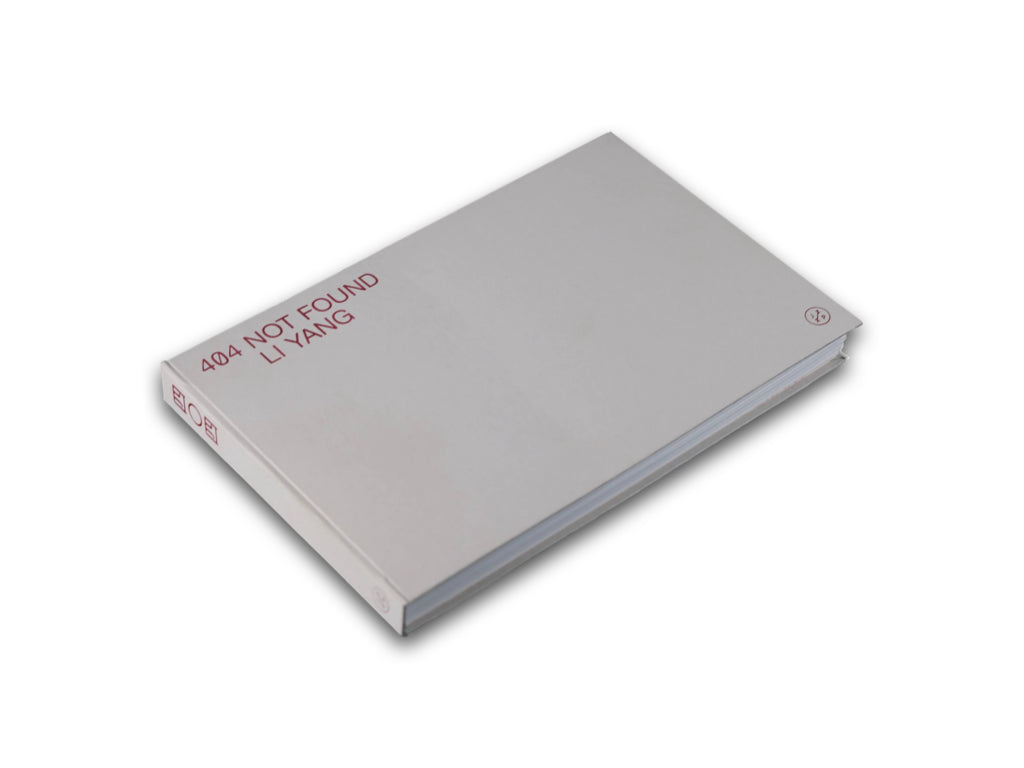特別版のみ販売中
サイズ: 225x155mm / 208ページ / 上製本
初版500部
2019年:Jiazazhi Press発行
About the book
本書の写真は、"404"と呼ばれる中国のある街で撮影された。"404"はインターネットで検索をかけた際にエラーメッセージとして"Not Found(未検出)"という意味もある。
"404"はコード名であるが、他のちゃんとした名前をつけさせてもらえず、今だに中国の地図でも記載されていない実在の街。"404"は1950年代に作られた街で、1㎢以下の土地に約5万人がかつて住んでいた。
"404"は、中国の核爆弾プロジェクトを支える原子力技術研究における最初期かつ最大の拠点で、その街の発展は、1964年と1967年の中国における原爆と水素爆弾のそれぞれの最初の爆発のあと、世界における中国の国際的地位向上に多大なる歴史的貢献をした。
"404"は小さい街ではあったが、中国のほかの街のようにすべての行政機能を持っていた。公安、土地管理、教育、裁判所などの行政機関がこんなにも小さい街で存在し、運営されていたのは、やはり特異な街だったからだ。
"404"はゴビ砂漠のなかにある孤立した場所に存在し、石ころもない土地だ。あるのは、ラクダ草(Camel Grass)と呼ばれる砂漠のような過酷な環境に自然に耐えられる種類の植物だけで、この場所のすべての樹木は人工栽培を通して育ちました。
この街が最初に建設された時、全国各地のエリートが選ばれ移住してきました。当時、国内で最も優れた原子力科学者、技術者、料理人、教師、医師などが集められてきたのでした。彼らはゴビ砂漠の真ん中にあるこの街に来て、何もないところから街を造り上げていったのでした。また、彼らは去ることもしませんでした。半世紀の仕事とそこでの生活の後、これらの人々は死に、彼らもまた結局そこに葬られました。
私は"404"移住者の第3世代にあたります。本作のすべて写真は、自分の経験と私の周りの人たちに関係するものになります。自分が通った幼稚園、自分の両親も卒業した小学校。地域の社交の場としても重要だった公衆浴場、そしてまた私が自分で植えた2つのポプラの木などがあります。これはかつての"我が家"で、人生で溢れていました。
"404"が建設されて半世紀後の2000年代はじめに、人々はそこから去りました。残ったのは、至るところ寂しい街の影でした。私がカメラを持って戻ってきて、寂しい街並みを目の前にした時、完全に違った世界に直面しているかのように衝撃を受けました。非常になじみがあるんだけれど、同時に非常に奇妙さに感じました。
リー・ヤン(李扬)
1984年、"404"に生まれ、19年間そこで過ごした。"404"は中国西部にあるゴビ砂漠にあった街で、中国の地図でも探すことのできない秘匿された土地だった。"404"は1950年代に建設され、中国初の核兵器の実験をした場所である。
リーは中国の西南科技大学(空気調和工学専攻)を2007年に卒業。2007年から2013年にかけて、中広核工程有限公司(China Nuclear Power Engineering Co., Ltd.)でデザインエンジニアとして務めた。2013年よりフリーランスの写真家として活動し、拠点を北京としている。
-
Only special edition is available
These photos were taken for a city in China called "404".
404 is just a code given to the city which has no another name, and it was and still is not marked on the map of China. This 404 city was built in the 1950s in China. During its days, there were about 50,000 people living there, but the size of which was no larger than one square kilometers.
404 was the earliest and the largest nuclear technology research base supporting the nuclear bomb projects in China. The establishment of 404 had made irreplaceable historical contributions to raising the international status of China in the world after the first explosions of the atomic and hydrogen bombs in China in 1964 and 1967 respectively.
Although small, 404 had all the governmental departments just like any other cities in China at the time bureaus of public security, land, public education and intermediate people's court, etc., all of these were built and run within such a small residential area.
404 was an isolated place in the Gobi desert. apart from the stones, only one type of plant called camel grass could survive naturally in the harsh desert environment, and all the trees in this place were grown through artificial cultivation.
When the city was first built, elites from all walks around the country were selected to move to 404. At that time, the city had gathered the country’s best nuclear scientists, technicians, chefs, teachers, doctors and so forth. They came here, built the city 404 with their bare hands from scratch in the Gobi desert, and they never left ever since. After half a century’s working and living there, these people died and they were also buried there in the end.
I am a third generation of 404, and every photograph in this series is related to my own experience and those of the people around me. The scenes include my kindergarten, my primary school which was the same school my parents went, the public bath which we used to go weekly and it was also an important social place for the local people, and the two poplar trees that I planted myself, etc. This was once our home, filled with life.
After half a century, people moved away from 404 at the beginning of 2000s, leaving deserted scenes everywhere. When I came back again with my camera and saw those deserted scenes, it struck me as if I was facing an entirely different world, feeling extremely familiar and yet very strange at the same time.
About the Artist
Born in a desert city called"404" in 1984 and spent 19 years. Located in the Gobi desert in Western China, this city is nowhere to be found on any map. 404 was built in the 1950s, when China initiated its first nuclear weapons testing.
Li graduated from China’s Southwest University of Science and Technology, majoring in Heating Ventilation and Air Conditioning (HAVC) in 2007. Between 2007 and 2013, he designed the HAVC system of the nuclear power station in the China Nuclear Power Engineering Co., Ltd. Since 2013 he has been working as a freelance photographer based in Beijing. His photographic series “404 NOT FOUND” won the Best Photography Award at the 7th Dali International Photography Exhibition.











